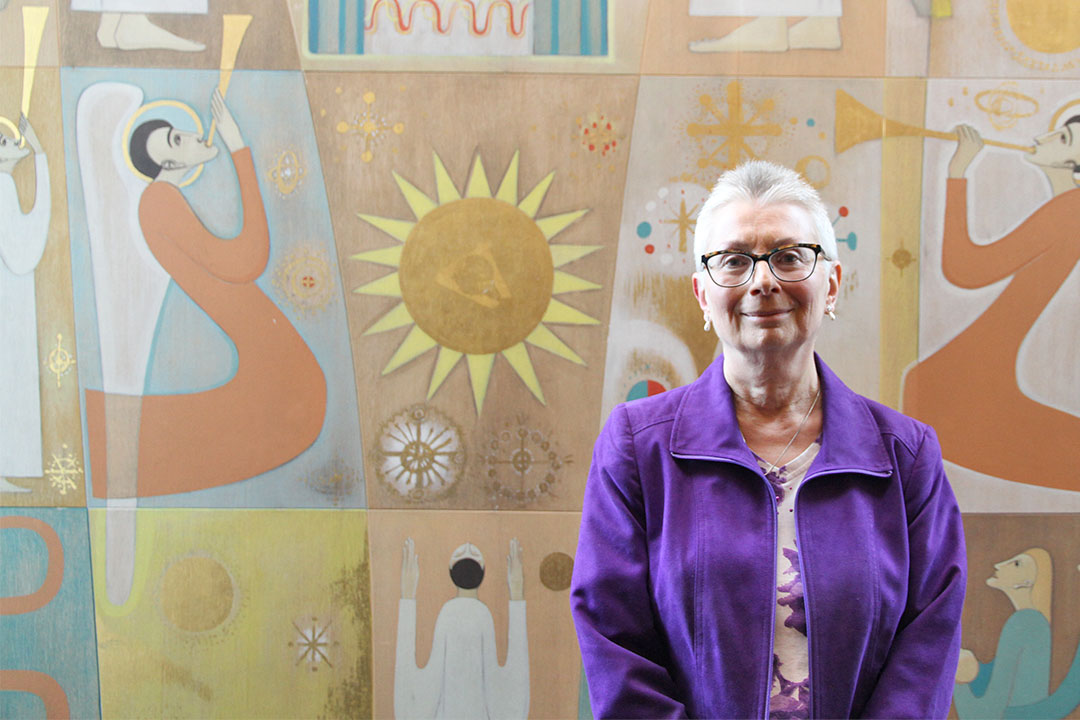Though these women—Kate and Margaret Fox—would later admit that their routine was a hoax, the trickery had already sparked the beginnings of a new religion: Spiritualism.
“People have believed that you could communicate with the dead and raise their spirits forever, as far as I can tell from the research I’ve done, but the way that Spiritualism has developed is much more optimistic,” said University of Saskatchewan religious studies professor Mary Ann Beavis. “The notion is that the dead are happy, they’re easily accessible, they want to help us, they want to communicate with us.”
The spectral works of the Fox sisters are one small slice of what’s covered by Beavis in Life after Death in World Religions, a class she offers through St. Thomas More College. The course, currently in its second year, explores afterlife beliefs in relation to world religions, both ancient and contemporary.
What surprised Beavis, who designed the course herself, was just how infrequently the topics of religion and death are tied together academically.
“In the popular mind, religion and afterlife kind of go together,” she said. “We have on this campus, I think, three different courses in three different departments on death and dying, including in religious studies. But nothing on afterlife—which is so funny, because you start talking about religion with just about anyone casually and within five minutes the conversation turns to afterlife.”
Lesser-known religions such as Spiritualism and Mormonism are briefly touched on at the course’s tail end, Beavis said, while larger faiths make up the bulk of the course outline.
One of Beavis’ favourite parts of teaching the course is the way it “explodes stereotypes” about major world religions. She cited Christianity as one example, explaining that there are huge variations in views of the afterlife beyond the pearly gates and heralding angels pictured in Sunday school.
Others, such as ancient Israelites, held views some might find macabre.
“The ancient Israelites really didn’t have any optimistic afterlife expectations at all,” she said. “There’s no angels, no heaven, no seeing the face of God. The archaic notion was that at the time of death the spirit departed from the person and sunk down to this nondescript kind of netherworld called Sheol. It didn’t matter if they were good or bad, rich or poor. It was sort of the great leveller.”
Other religions, such as Hinduism and Buddhism that largely developed in Asia, focus much more heavily on the inevitability of the afterlife and what comes next, Beavis said.
“In the larger Asian religions ... you’re going to reincarnate in some form or another, depending on your karma and the way you live your life,” she said, explaining that Westerners often romanticize the notion, imagining glamorous past and future lives while wholly missing the core point of the faith.
“In the Asian perspective, if you’re reincarnated you’ve actually done something wrong. It’s not the ideal. What you want is ultimate release and blissful oblivion.”
Beavis encourages her students to explore religions beyond those outlined in the syllabus, and has had some tackle personal projects on areas such as the differentiations within Christianity, afterlife beliefs in Indigenous spirituality, and even Scientology.
The goal, she said, is to broaden students’ views on both their own religions and those they are less familiar with.
“I hope it will maybe bring them into more awareness of their own cultures and presuppositions, and to be more open-minded about the beliefs of others,” she said. “Even a tradition that’s as seemingly cut-and-dried and as afterlife-focused as the Christian tradition, is open to a wide variety of interpretations.”
On a grander scale, though, Beavis isn’t surprised that the class has turned heads.
“Whether or not there’s an afterlife is a matter of existential concern to just about everybody, whether they admit it or not.”
